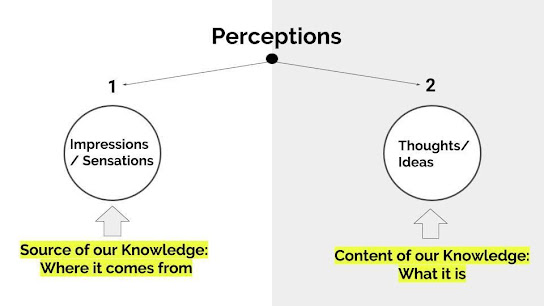KNOWLEDGE THE EPISTEMOLOGY OF PHILOSOPHY
INTRODUCTION
Perception is the sensory experience of our surrounding environment. In broad, perception can be defined as organization, identification, and interpretation of sensory information in order to represent and understand the environment. This is a process of physical or chemical stimulation of the sense orange by involving the signals in the nervous system. For example, when the light striking the retina of the eye it makes vision, hearing involves pressure waves. But the perception is not the passive receipt of these above signals. It is shaped by learning, memory, expectations, and attention. This is to show we organize the elements in our brain. Firstly, we select the item to attend to and block out most of everything else in the surround. Yes! It is our brain’s way of focusing on the task to give it our attention. In this case, we have chosen to attend to the image. Then, we organize the elements in our brain. For this picture, there might some individuals who will see a vase because they attend to the black part of the image firstly, while some individuals see two faces because they attend to the white parts of the image. But after I describe this all these two types of individuals can see both, but only one at a time, depending on the process that I mentioned above. This is perception.
THE ELEMENTS AND BASIC KINDS OF PERCEPTIONS.
- Perceiver
- The object
- The sensory experience
- The relation between the object and the subject
- Visual perception
- Auditory perception
- Olfactory perception
- Hepatic (touch) perception
- Gustatory perception





Comments
Post a Comment